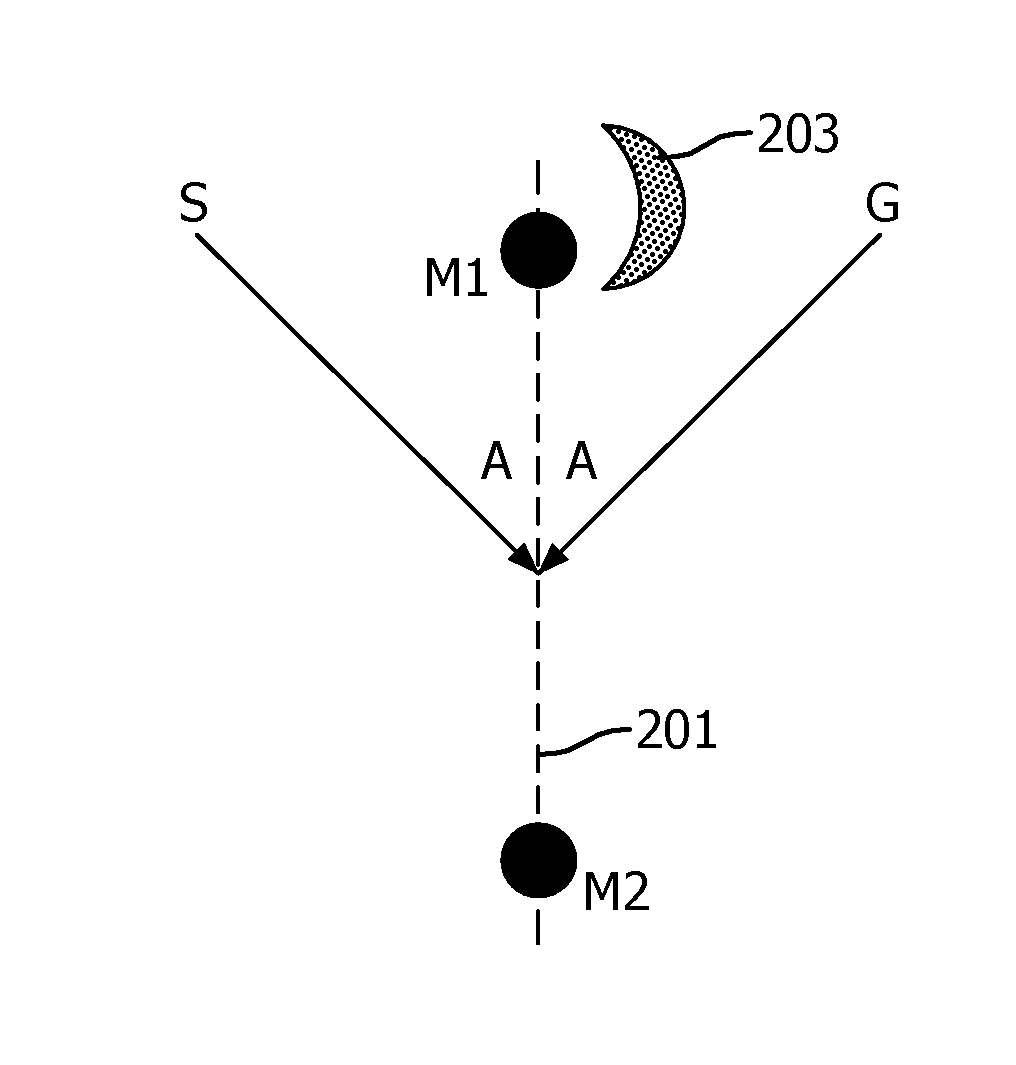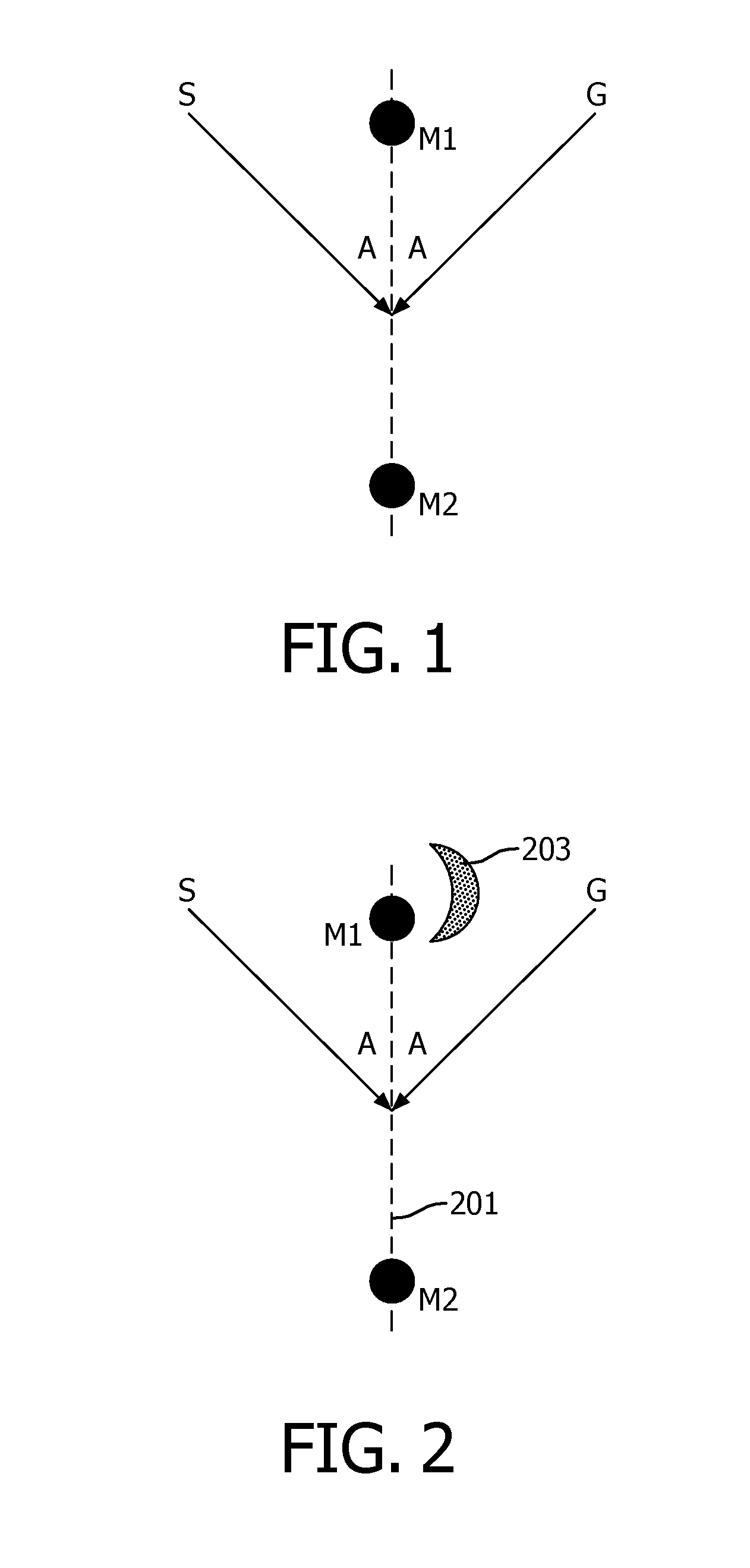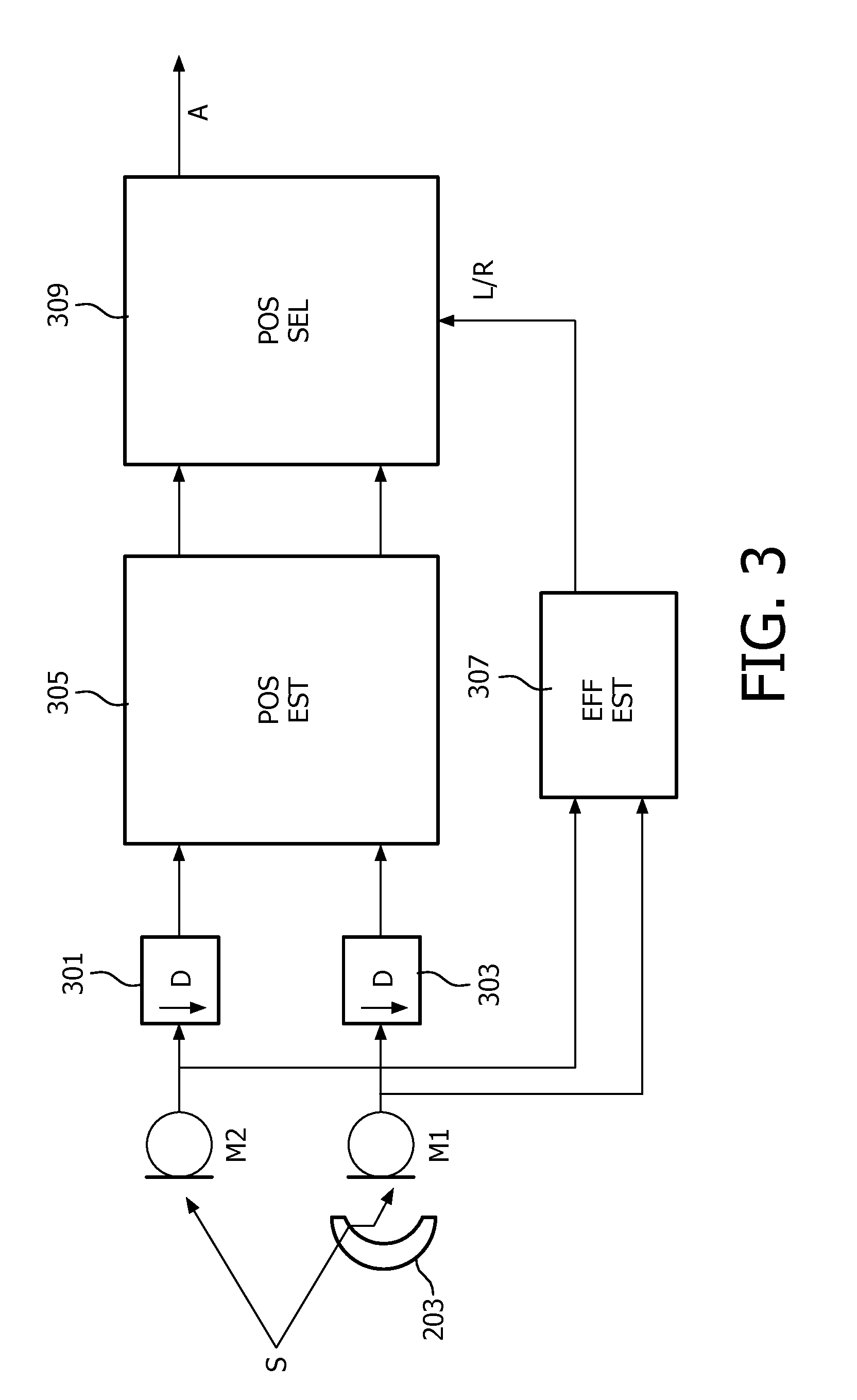Audio source position estimation
a technology for audio sources and positions, applied in direction finders, mouthpieces/microphone attachments, instruments, etc., can solve problems such as insufficient high practicability, and inability to provide sufficient information about the direction of the sour
- Summary
- Abstract
- Description
- Claims
- Application Information
AI Technical Summary
Benefits of technology
Problems solved by technology
Method used
Image
Examples
Embodiment Construction
[0058]The following description focuses on embodiments of the invention applicable to position estimation from a sound source using Time Difference Of Arrival (TDOA) at only two microphones to determine an angular direction towards the audio source. However, it will be appreciated that the invention is not limited to this application but may be applied to many other applications determining positions of sound sources.
[0059]FIG. 2 illustrates an example of the configuration of the setup for the approach. Similarly to FIG. 1, the system employs two microphones M1 and M2 which are located with a given distance to each other. In the described approaches, a time difference of arrival of the sound from a sound source S to the two microphones M1 and M2 is used to first generate two possible positions. In particular, a first possible position in the half-plane to the left of the axis 201 between the microphones M1, M2 is generated and a second possible position in the half-plane to the righ...
PUM
 Login to View More
Login to View More Abstract
Description
Claims
Application Information
 Login to View More
Login to View More - R&D
- Intellectual Property
- Life Sciences
- Materials
- Tech Scout
- Unparalleled Data Quality
- Higher Quality Content
- 60% Fewer Hallucinations
Browse by: Latest US Patents, China's latest patents, Technical Efficacy Thesaurus, Application Domain, Technology Topic, Popular Technical Reports.
© 2025 PatSnap. All rights reserved.Legal|Privacy policy|Modern Slavery Act Transparency Statement|Sitemap|About US| Contact US: help@patsnap.com



